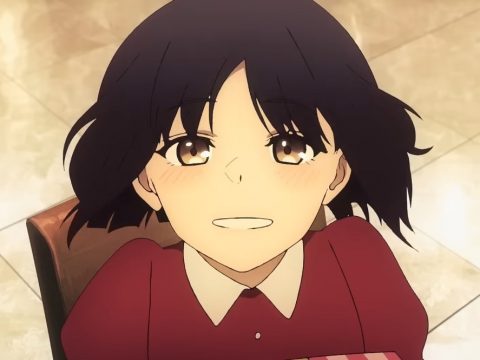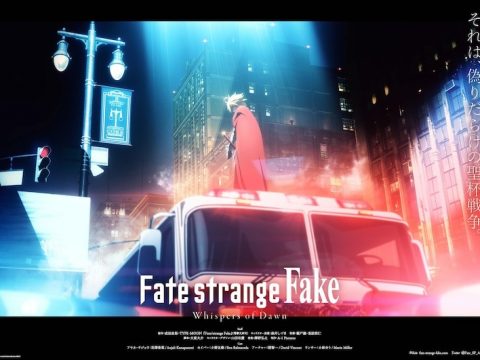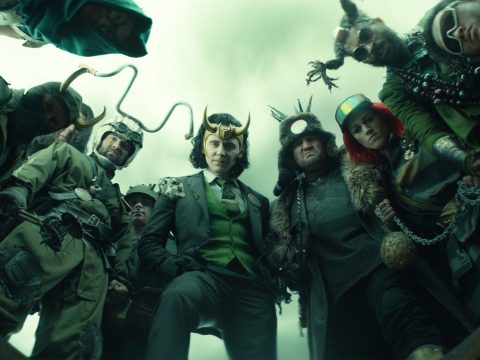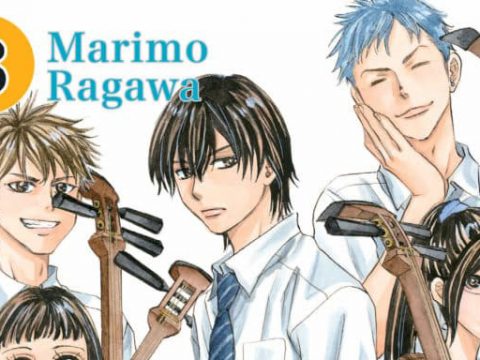
Duel Of Fates
The Fate series has always proved more appealing in theory than in execution to me. Its core conceit is brilliant: throwing figures of myth into a battle royale laden with arcane rules that exist only to be twisted taps directly into both our ancient fascination with the larger-than-life qualities of these legends and our more contemporary obsession with the kind of pyrotechnic spectacles and death games that have become leading popular narratives in our age. And yet from the very beginning no iteration of this premise has yet taken real advantage of it.
The 2006 Fate/stay night series squandered its considerable length on horrendous dialogue and dreadful writing, devoted entirely too much of its attentions to the boring and detestable Shirou, and fell prey to Nasu’s lack of capacity for appreciating the miraculous dimensions that make mythologies so compelling in the first place. Nasu might extoll with grandiose prose the way Gilgamesh’s Ea “pierce(s) the very nature of the World itself to show the ‘Truth,’ (sic)” he might waste a torrent of words gushing about how Arturia’s Rhongomyniad “is a pillar of light that fastens together the outer layer of the world and the Reverse Side of the World (sic),” but in action these supposed feats look and function like nothing more than laser beams because he has no sense for the wondrous or the abstract. A quick glance at the stat tables studding the interludes of the original stay night visual novel only confirm it: Nasu is an otaku’s otaku, a writer raised on pulpy anime and third-rate JRPGS and badly managed tabletop games who never really understood these forms’ appeal beyond their emphasis on statistics and figures and everything else that literalized the fantastic.

Gen Urobochi’s Fate/Zero, which ran from 2011-2012, possessed in a more nuanced understanding of its source material and made far better dramatic use of its cast to study the flaws inherent in heroic myths and their incompatibility with contemporary mores, but its interests were in deconstructing the very myths it borrowed from. Zero never had any desire to convey the magic of these old legends because it was devoted to exposing the hypocrisies and the ugliness—the base humanity—hiding at their heart. In that sense, then, it may be for the best that the new Fate/Apocrypha has swapped those philosophical ambitions for ambitions of scope and scale.
Rather than restrict the proceedings to the back alleys of a provincial Japanese city and the surrounding forests, Apocrypha takes place over the fields and cityscapes of all Transylvania. Rather than narrow down the contestants to a handful, Apocrypha expands theirs ranks to encompass not just twice the number of Servants and twice the number of masters, but to include as well an entirely new class of Heroic Spirit and a bevy of side characters drawn into this melee who prove as integral to its motions as any legend does. For once, the Holy Grail War feels like a war.

If this decision greatly reduces the amount of time that can be devoted to exploring each member of the cast, it also forces the writers to make a number of narrative choices that emphasize their most striking aspects. Spartacus, the Berserker summoned by the Red faction, spends his every moment ranting wildly about the evils of oppressors and charging into hopeless battles, a distillation of what the character has come to mean in legend. Shakespeare, serving as the Red faction’s Caster, struts and frets away his limited screentime by quoting his own writing or preening about what a fine play this would all make just as his storied reputation might suggest he would. This approach might diminish them as people, but it also lends them a presence even the best observed of Urobuchi’s characters lacked.
This expansion has had a similar broadening effect on Apocrypha’s combat. There’s nothing of the acrobatic displays that Cu Chulainn and Archer showed off in their first skirmish in stay night, nor of the careful choreography of tentative pokes and prods and parries that marked Arturia and Diarmuid’s earliest encounter in Zero. There’s hardly the time or the room for that in a series where combat is rarely a matter of localized, one-on-one scuffles and more often a scenario where entire armies of homunculi and golems are marshalled to fend off an incoming flying fortress. Where Noble Phantasms launched from one end of the battlefield might arc across its span to change the tide of a mortal combat between two Servants. Where the aftershock between clashing combatants can level the surrounding countryside. It’s a welcome change of form, one that does proper service to the mythic aspirations of this series when there’s budget to spare: an early fight between Karna, the lancer of Red, and Saber of Black Siegfried showcases destruction on a scale befitting these heroes’ reputations.

Yet for all that this helps to reorient a series that was either misguided or underutilized to begin with, there’s also an underlying sense that all of this feels so much like fanfiction. A sense that this is all somehow wrong at every level, from the animation to the art to the writing. Unlike in Ufotable’s always glamorous adaptations, Apocrypha’s production values vary wildly from scene to scene. The confrontation between Karna and Siegfried is meant to be dazzling with particle effects and momentous forces, yes, but it’s also a mess of confused choreography and incoherent production choices such as a perpetually shaking camera that make it impossible to contextualize. Meanwhile, the fight between a gaggle of Servants and a vampiric Vlad Tepes is so leaden, so stiff, so lacking in urgency and impressive feats that it feels like it’s been borrowed from a forgotten Saturday morning cartoon. Nor do the emotional stakes ever feel clear. Aside from a brief scuffle between Achilles and his former mentor Chiron, character motivations and interactions feel forced at best and nonexistent at worst, an especially dire decision that does little to anchor the plot after a number of questionable plot choices catapult uninteresting side characters into prominent roles.
But none of this is truly explored in any meaningful way. It feels like a narrative trick meant to fool viewers into thinking there’s something more to this empty series. For all of Nasu’s flaws, he is an honest author, and so all of his work feels like the product of a passionate soul. None of Apocrypha feels honestly come by; from the animation to the art to the story, it feels cheap, underdeveloped. It feels like a bootleg product borrowing only the name and core concept of the Fate series. It feels fake—as if scenario writer Yuichiro Higashide and director Yoshiyuki Asai assembled the skeleton of something that might work if developed and then tried to convince those watching through trumped-up spectacle that no, it actually did work.

It may be fitting that a show titled Apocrypha that also makes questions of authenticity its most pressing narrative concern would itself feel like a knock-off. And perhaps the second half of the series will take advantage of this fact to more deeply investigate these issues while developing a sense of the mythic truly equal to its sense of scope and scale.
Fate/Apocrypha is available from Netflix.
This story appears in the April 2018 issue of Otaku USA Magazine. Click here to get a print copy.






![SSSS.Dynazenon [Anime Review] SSSS.Dynazenon [Anime Review]](https://otakuusamagazine.com/wp-content/uploads/2021/08/16-9-SSSS.Dynazenon_Key_Visual_3.5-480x360.jpg)
![Back Arrow [Anime Review] Back Arrow [Anime Review]](https://otakuusamagazine.com/wp-content/uploads/2021/07/ba15-02686-480x360.jpg)